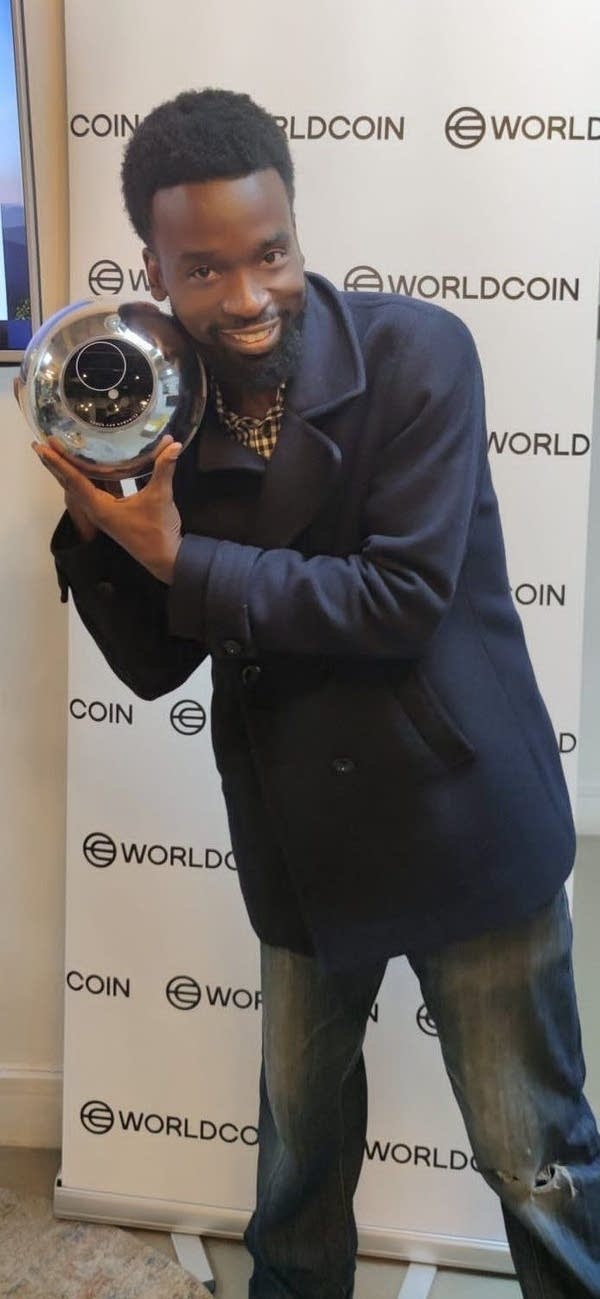Marketplace®
Why people are letting Worldcoin scan their eyes
The company seeks to use biometric data to verify whether an internet user is indeed a human being. It’s paying people for eye scans in some countries but being prevented from operating in others.


Worldcoin, a biometric authentication project co-founded by OpenAI CEO Sam Altman, has been running for over a month now.
On its face, Worldcoin seems simple: You get your eyeball scanned by a shiny, metallic orb and — depending on the country you’re in — receive cryptocurrency in exchange.
The company’s goal is to use these iris scans to create what it calls a World ID. It’s sort of a digital passport based on biometric data intended to prove that the user behind an online account is a real person.
So far, more than 2 million people have signed up for a World ID. But regulators are skeptical.
After thousands of people lined up at registration centers in Kenya, the country became the first to suspend Worldcoin operations over regulatory concerns. The project is now being investigated there, as well as in Argentina, Germany and the United Kingdom.
Critics says World IDs have been sold as fake IDs on virtual black markets. The company has enhanced security measures in response.
Another criticism is that these data collection procedures could be exploiting people in developing countries, who are effectively giving up their digital identities in exchange for money.
Amid all the scrutiny and intrigue, the BBC’s Leanna Byrne went to a scanning site to see what the fuss is about.
Byrne started by downloading the app and booking a slot to have her eye scanned in one of the two locations in London.
At the site in the trendy area of Shoreditch, Byrne was able to walk right in for her scan, despite the photos of lines across the world.
You have to show a QR code on your app and gaze into a silver orb, which takes the scan in about 10 seconds. Then the app says, “Successful verification.”
Moses Serumaga went along to get his eye scanned too. The main motivation for him wasn’t the Worldcoin itself. It was the fear of missing out.
“Nowadays you don’t want to be left out, you know. So you can look at it the way people looked at [artificial intelligence] and now it’s taken over. So I’m sure Worldcoin will go a long way,” he said.
It will be interesting to see whether the demand for Worldcoin continues amid so much scrutiny or the early momentum is quashed by regulation.
The Team
- Daisy Palacios Senior Producer
- Daniel Shin Producer
- Jesús Alvarado Associate Producer





